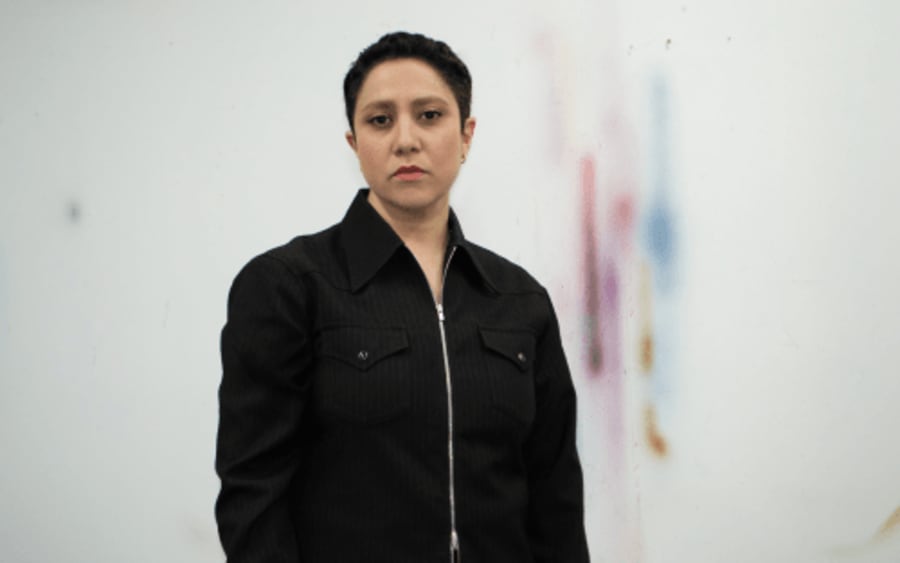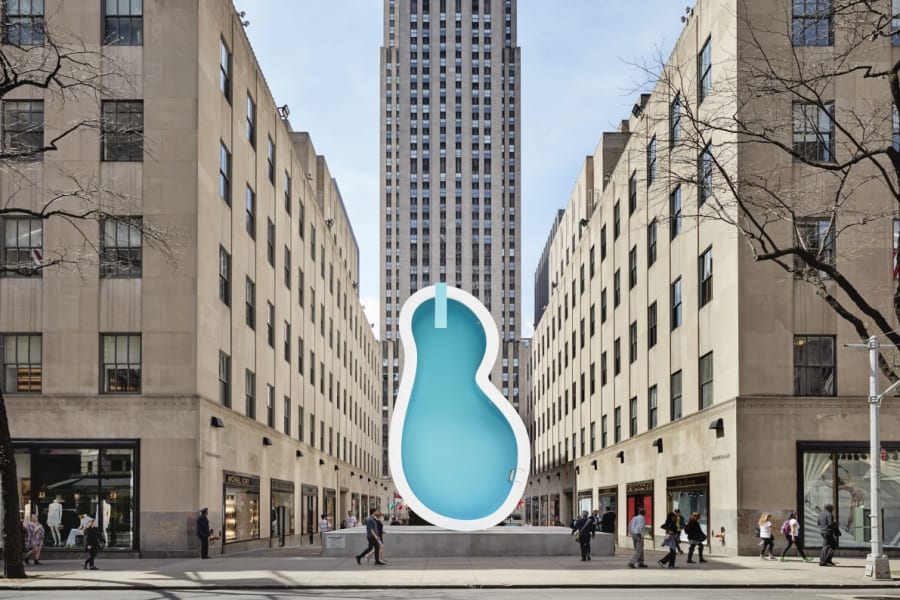American artist Mark Dion has investigated representations of the natural world since the 1980s. Inhabiting the roles of illustrator, collector, archaeologist, curator, and contemporary surrealist, Dion uses the early modern European tradition of the Wunderkammer – encyclopedic ‘cabinets of curiosity’ seen as precursors to museums – as a tool for critical inquiry into systems of knowledge and categorization. His site-specific works have included assemblages of artifacts combed from the banks of the River Thames in London (Tate Thames Dig, 1999), an excavation of the sculpture garden at the Museum of Modern Art in New York (Projects 82: Rescue Archaeology, A Project for The Museum of Modern Art, 2004), and a sculptural re-creation of expeditioners’ tools in white papier-mâché, like ghost objects, installed in the Trophy Room at New York’s private Explorers Club (Phantoms of the Clark Expedition, 2012). An article in T: The New York Times Style Magazine from 2016 describes Dion as ‘a genealogist of sorts, tracing the bloodlines of Western intellectual history to ask, among other things, how European colonial expansion, environmental plundering and the creation of the museum all relate to the ecological disasters we face today.’
This month, Dion is unveiling a new work, Mrs. Christopher’s House (2024), on view indefinitely in Pittsburgh as part of the Troy Hill Art Houses, a group of sculptural installations in formerly occupied homes founded by collector Evan Mirapaul. Preserving the house’s original architecture, dating to 1880, Dion has created a series of semi-autonomous installations throughout the entire building that act as a ‘time machine,’ he tells me. Playing with the convention of the period room, each space references not only a particular temporal moment – including the 1920s, the early 1960s, and the 1990s – but also motifs from Dion’s career. ‘It has a retrospective quality,’ the artist continues.
Dion called the installation Mrs. Christopher’s House based on the name of the former owner. On the ground floor, he has constructed a glass-walled diorama of what he imagines the house looked like on Christmas Eve in 1961 – the year he was born. Like many of his former projects, the work recalls museum period rooms that seek to create an immersive experience of a specific time and place. Dion describes the room – which features, among other items, a framed picture of former US President John F. Kennedy and his wife Jackie, an aluminum Christmas tree, and toys scattered across the floor – as representing the house at its ‘apex,’ reflecting ‘a moment of optimism in the trajectory of the American working class’ and Pittsburgh’s midcentury prosperity. The aluminum Christmas tree, for example, gestures to the metal manufacturing company Alcoa, which is headquartered in the city. In the 1970s and 1980s, the steel industry that served as the cornerstone of Pittsburgh’s local economy collapsed, causing severe financial consequences which have reverberated for decades. This installation encapsulates a time of hope and innocence, before the social and environmental costs of this industry became widely known. The room also nods to the strategies Dion employed for Christmas Eve, 1933, a 2016 commission for SiTE:LAB in Grand Rapids, Michigan. For that project, he transformed a rectory of the parish church of St. Joseph the Worker (a building about to be demolished). He recalls that melancholic space as ‘a depiction of a lonely priest’s Christmas Eve on the verge of the world tearing itself apart, on the verge of the Second World War.’
On the second floor of Mrs. Christopher’s House, Dion reprises several important series and interests. He has transformed a former bathroom into a brick-walled prison with a small, barred window, where a life-size plush bear appears at rest. The stuffed animal is the same one he showed in Grotto of the Sleeping Bear at Storm King Art Center in 2019, itself a reprisal of an outdoor installation he debuted at Skulptur Projekte Münster in 1997. An adjacent space to the bear’s enclosure mimics a 1990s Lower East Side gallery, complete with a rotary phone and ring binders of artists’ slides. There, he shows new photographs from his series Ursus maritimus (Latin for ‘polar bear’). Dion began ‘hunting’ images of polar bears in natural history museums in 1992 and has used the same basic camera – a Pentax K-1000 35mm – to shoot them ever since. These bodies of work reflect Dion’s longtime investment in revealing the spaces of zoos and museums as sites that illustrate conquest and containment of other species, even as they seek to educate.
Down the hallway, on the same level, visitors encounter the ‘Extinction Club,’ with interiors rendered in a style evoking the 1920s and 1930s. The room references the vibe of the members-only Explorers Club but adds a critical twist: ‘Instead of a space that is expressing glee in the domination and murder of animals,’ Dion tells me, ‘this is a place contemplating extinction – and particularly human-caused extinction.’ The décor includes a wallpaper of extinct animals – which Dion originally produced for his 2018 retrospective at the Whitechapel Gallery in London – and tiles depicting animals and species living near a preserved nurse log, first manufactured for his Neukom Vivarium installation at the Seattle Art Museum in 2006. Dion drives home the point of human-caused ecological disasters with a birdcage sculpture featuring a dead canary resting on a spill of creosote.
In the attic of Mrs. Christopher’s House, the artist encourages visitors to take on the role of hands-on researcher. Evoking his Memory Box installation in a tar-paper shed, first shown in 2015, he has lined the walls with shelves of vessels. On one side of the room is a series of clear bottles and jars displaying natural specimens or cultural artifacts – of metal, ceramic, plastic, papier-mâché, and glass – that visitors cannot touch. On the other side of the room, a number of boxes made of materials such as tin, wood, Bakelite, and ceramic are available for interactive consultation. Containing items like swizzle sticks, diaper pins, and game pieces, they spark the curiosity and wonder of childhood. This part of the installation is an apt conclusion that emulates Dion’s mindset. His art asks: How does classification of the natural world shape our experience of it? Who is voicing those narratives, and which ideologies underpin them? How can we reframe these collections, with wonder and criticality – and, in so doing, shift the dominant perspective?
Mark Dion is represented by Tanya Bonakdar Gallery (New York and Los Angeles), Galerie Nagel Draxler (Berlin, Cologne, Munich), and In Situ - fabienne leclerc (Paris).
Mrs. Christopher’s House and the other Troy Hill Art Houses are open to the public by appointment.
Wendy Vogel is a writer and independent curator based in New York and a Part-Time Assistant Professor in the BFA Photography program at Parsons School of Design. She is the recipient of an Andy Warhol Foundation Arts Writers Grant.
Cover image: Mark Dion, Mrs. Christopher’s House, 2024. Photograph by Rebecca Kiger. Courtesy of the artist and Troy Hill Art Houses.
Published on October 28, 2024.


